It looks like you're using an Ad Blocker.
Please white-list or disable AboveTopSecret.com in your ad-blocking tool.
Thank you.
Some features of ATS will be disabled while you continue to use an ad-blocker.
share:
The story of the forgotten Goddess that returned is an interesting one, especially as that was the essential aspect of her Cult;
Fishing for Roman Altars.
Return of a Forgotten Goddess
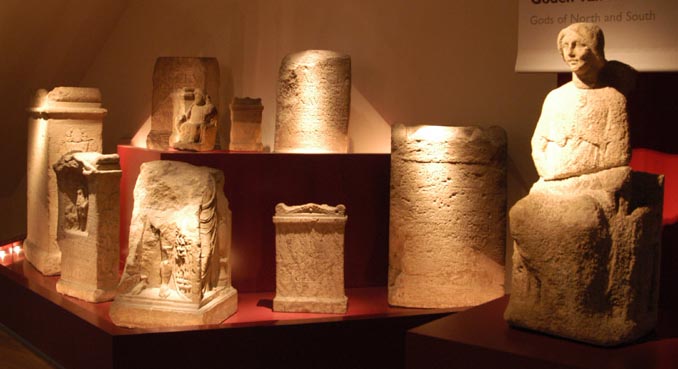
To the goddess Nehalennia,
on account of goods duly kept safe,
Marcus Secundinius Silvanus,
trader in pottery with Britain,
fulfilled his vow willingly and deservedly.
Goddess Nehalennia
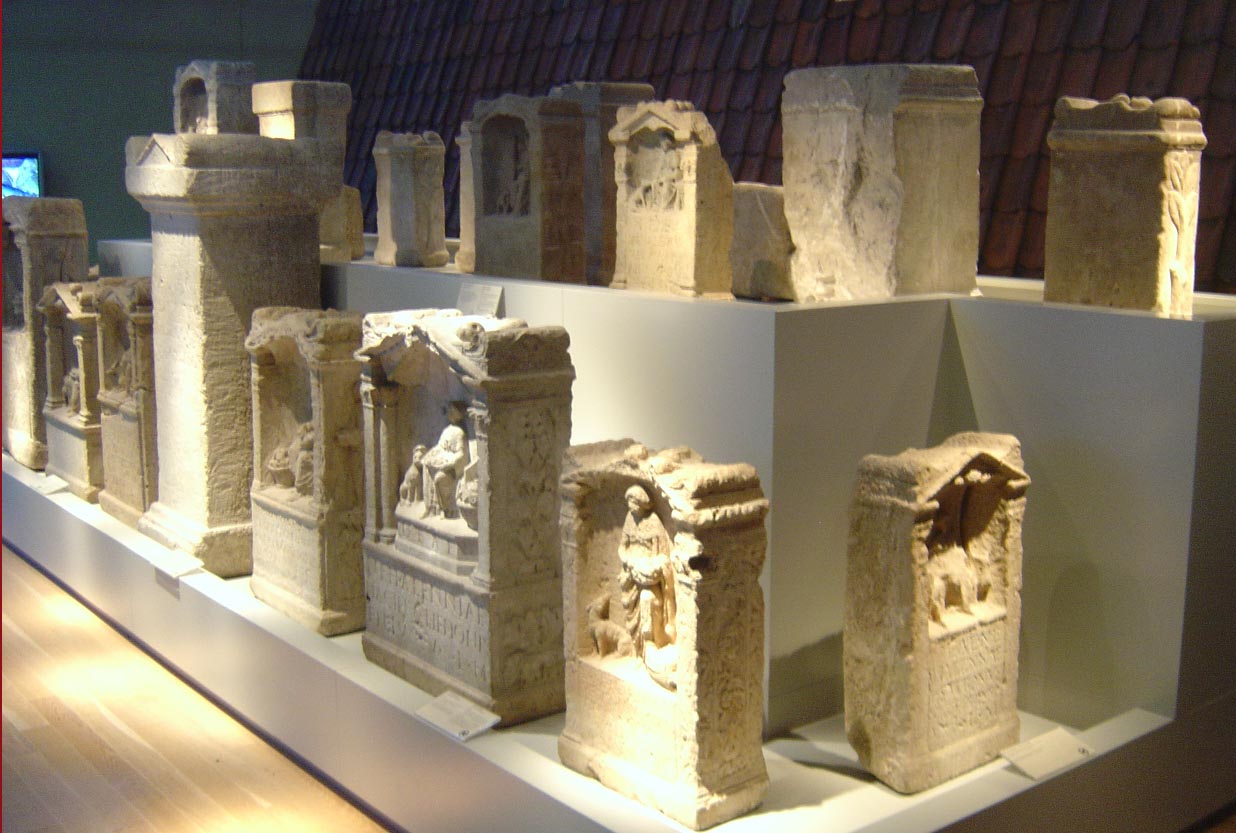
Very much a Goddess associated with the deep dark waters off the coast of the Netherlands, one finds also a concern at her Temples with the deep dark Earth also, as this was placed around them, and a sacred grove created, which has led some to also identify her with Nerthus.
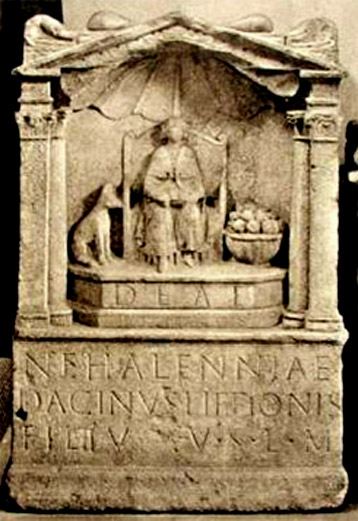
Her faithful dog companion will have underworld psycho pomp associations, it's howling will indicate that she is in some way lost within such, i wrote of Black Dog tradition also here, which is related;
Witches and the Black Dog
The Temple of Nehalennia at Domburg
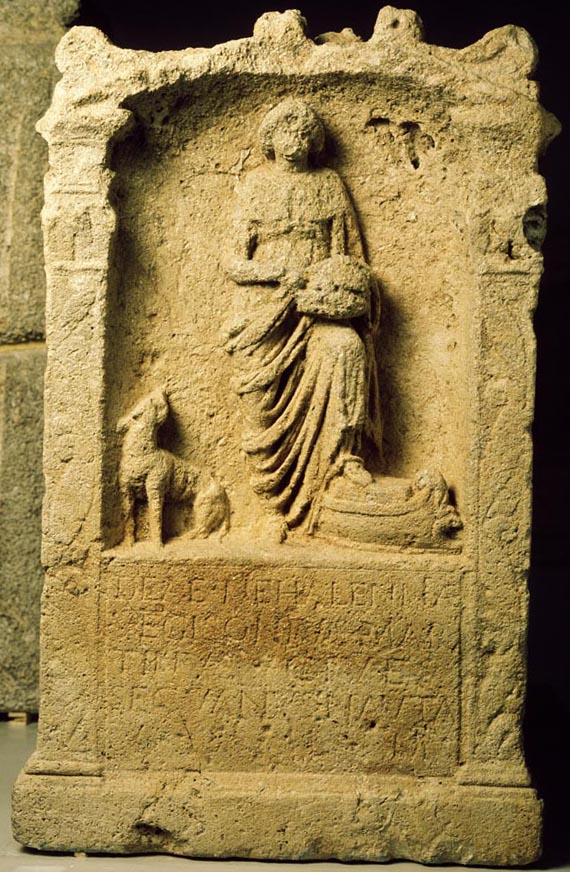
Aryan Myth-Isa
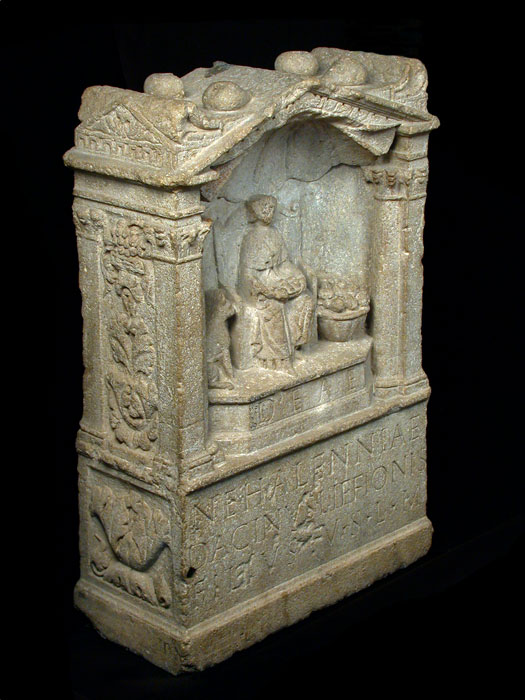
Isi was also the tutelary Goddess of the tribe that founded Paris, the Parisii, who held lands along the Rhine, the Seine, and the Humber, she is a maiden type Goddess associated with Spring rebirth, similar to the Scandanavian Idun.
To understand the cult of Nehalennia one needs to consider the Maiden Goddess that falls into the Underworld, from where she can distribute her fruit as the gift toward rebirth, she is not then the personification of Hel as such, but can operate from within there...and can be seen to return from within such.
The Return of Idun
“Bright Iduna, Maid immortal!
Standing at Valhalla’s portal,
In her casket has rich store
Of rare apples, gilded o’er;
Those rare apples, not of Earth,
Ageing Æsir give fresh birth.”
-VALHALLA (J. C. Jones)
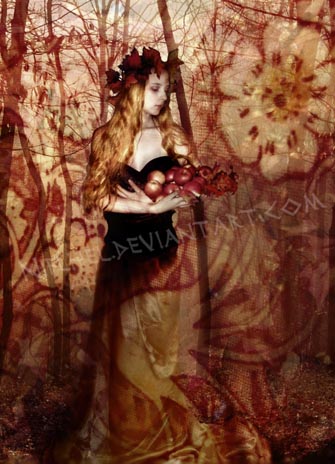
The apples were obviously of a very special variety, first grown in far off Uruk.
The Great Apple Tree
In the first days of the year of 1647 a completely forgotten goddess appeared again…. after a storm at the beach of the small Dutch town of Domburg, votive altars, statues and remnants of a small ancient temple were found. Many inscriptions on the altar stones point without any doubt to a goddess with the name Nehalennia and these stones originate most likely from the first centuries of the Common Era, the time that Dutch area belonged to the Roman Empire. The inscriptions show, that this goddess was venerated by Germanics, Celts and Romans
In 1970 and in the following years even more spectacular finds were found; a fisherman found in his nets parts of votive altars, dedicated to Nehalennia
Fishing for Roman Altars.
Return of a Forgotten Goddess

It may seem strange that the Colijnsplaat altars were discovered in the sea, but it must be noted that the Zeeland archipelago did not exist in the Roman age. In those days, the river Scheldt had its estuary north of Colijnsplaat, and modern archaeologists assume that the altars at Domburg and Colijnsplaat were part of two sanctuaries.
Several inscriptions inform us that the votive altar was placed to show gratitude for a safe passage across the North Sea, and we may assume that other altars were dedicated for the same reason
To the goddess Nehalennia,
on account of goods duly kept safe,
Marcus Secundinius Silvanus,
trader in pottery with Britain,
fulfilled his vow willingly and deservedly.
Goddess Nehalennia

Very much a Goddess associated with the deep dark waters off the coast of the Netherlands, one finds also a concern at her Temples with the deep dark Earth also, as this was placed around them, and a sacred grove created, which has led some to also identify her with Nerthus.
In the 2nd and 3rd centuries AD, the south-western part of the Netherlands was intersected by tidal river-channels. A navigable river-mouth, not far from the Nehalennia sanctuary may have given access to the North Sea, and there may have been a nearby sheltered creek used as a harbor. Tree-stumps round the temple mentioned in the 1647 finds suggest that there was a wood surrounding the temple, which would then have been situated within a sacred grove. Knowing that sacred groves were once natural temples, it is possible that the Roman-style temple was raised within a grove that had previously served as the open-air sanctuary of the goddess.
Outside the temple was a kind of black soil, where on the south side were four or five pedestals in a row which had later fallen backwards towards the black soil, in which they gradually disappeared under the sand – yet regularly reappeared again at low tide

Her faithful dog companion will have underworld psycho pomp associations, it's howling will indicate that she is in some way lost within such, i wrote of Black Dog tradition also here, which is related;
Witches and the Black Dog
Combining Nehalennia´s four main attributes, throne, ship, dog and fruit into a scheme, it becomes clear that she can be placed in a long series of goddesses that are both Gallo- Roman and pre-Celtic, who have protective qualities and who are in intimate relation with fertility as well as death and the underworld, having the double character of life and death
The immense importance of “seeresses” or sibyls in Celtic and Germanic cultures should be taken into the consideration of a divine sibyl prototype that may have influenced the symbol of the seated goddess, who like these “sibyls” not only divined the future, but also influenced it (so-called “operative divination”.
The Temple of Nehalennia at Domburg

Nehalennia, the protectress of ships and trade, was worshipped by the Keltic and Teutonic races in a sacred grove on the island of Walcheren; she had also altars and holy places dedicated to her at Nivelles. The worship of Isa or Eisen, who was identical with Nehalennia, was even older and more wide-spread throughout Germany
The above-mentioned two references to Isa identify Her as a Goddess of the underworld and She is associated with ships. We must remember that in the Germanic world there have been many discoveries of ship burials and clearly our ancestors drew a link between the ship and the underworld. Likewise Isis is associated with both water and the underworld. We also recall the descent of the Goddess Ischtar into the underworld and the more recent revelations concerning Isais[Goddess who resides in the Untersberg]
Aryan Myth-Isa

Isi was also the tutelary Goddess of the tribe that founded Paris, the Parisii, who held lands along the Rhine, the Seine, and the Humber, she is a maiden type Goddess associated with Spring rebirth, similar to the Scandanavian Idun.
To understand the cult of Nehalennia one needs to consider the Maiden Goddess that falls into the Underworld, from where she can distribute her fruit as the gift toward rebirth, she is not then the personification of Hel as such, but can operate from within there...and can be seen to return from within such.
According to this account, Idun was once sitting upon the branches of the sacred ash Yggdrasil, when, growing suddenly faint, she loosed her hold and dropped down on the ground beneath, to the lowest depths of Niflheim. There she lay, pale and motionless, gazing with fixed and horror-struck eyes upon the grewsome sights of Hels realm, trembling violently all the while, as if overcome by the penetrating cold.
Seeing that she did not rouse herself and return, Odin finally bade Bragi, Heimdall, and another of the Gods go in search of her, giving them a white wolfskin to envelop her in, so that she should not suffer from the cold, and bidding them make every effort to rouse her from her stupor
The Return of Idun
“Bright Iduna, Maid immortal!
Standing at Valhalla’s portal,
In her casket has rich store
Of rare apples, gilded o’er;
Those rare apples, not of Earth,
Ageing Æsir give fresh birth.”
-VALHALLA (J. C. Jones)

The apples were obviously of a very special variety, first grown in far off Uruk.
The Great Apple Tree
edit on 27-8-2013 by Kantzveldt because: (no reason given)
You know Kantz, I just love when you tell me you've written "little" Thread...
Yet another Goddess I have not heard of gonna take me a while to absorb all you have written..
Oh and having a rabid Anime fanatic in the house (other than myself).
Queen Nehelenia is the leader of the Dead Moon Circus
They are the enemies of the Sailor Soldiers...I am finding it more and more fascinating how obscure stuff like this shows up in pop culture.
Yet another Goddess I have not heard of gonna take me a while to absorb all you have written..
Oh and having a rabid Anime fanatic in the house (other than myself).
Queen Nehelenia is the leader of the Dead Moon Circus

They are the enemies of the Sailor Soldiers...I am finding it more and more fascinating how obscure stuff like this shows up in pop culture.
edit on 27-8-2013 by abeverage because: (no reason given)
reply to post by abeverage
Yes those wicked little Sailor Moons must be crushed, but to be fair there were childhood issues,


And also spending excessive amounts of time trapped in a Netherworld mirror can't be good for ones' mood...
Yes those wicked little Sailor Moons must be crushed, but to be fair there were childhood issues,

As a child, she felt completely alone due to her status as young queen, and never felt that she had any real friends or loved ones. As a result, she learned to love herself, leading to her incredible vanity as she grew up. It is for this reason that she wanted to stay beautiful forever, so that others would at least admire her even if they would never love her. However, Nehelenia is ultimately redeemed by the Senshi's forgiveness, and reborn as a small child around Chibiusa's physical age. She is referred to as "Queen" even at this age, and she only remembers everything as a bad dream. However, signs point to her having learned her lesson, as she is seen making an effort to become close to her subjects as true friends.

And also spending excessive amounts of time trapped in a Netherworld mirror can't be good for ones' mood...
edit on 27-8-2013 by Kantzveldt because: (no reason given)
reply to post by Kantzveldt
As your typical style, you have once again picked up your distaff and spindle or since we have gone Scandinavian the Friggjar rockr and have woven another elegant tapestry of something lost needing to be found.
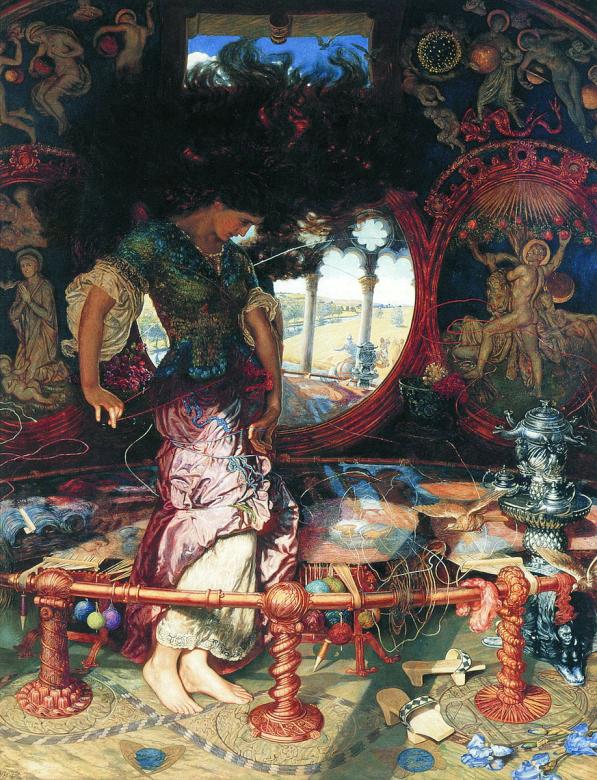
The apples you wield though I hope are not from Eris...
I know of the connection of Iðunn and Idis and the Valkyrie, I had up until now been oblivious to Nehelannia however. Do you know about Idis then as well since you are linking Nehelannia to Iðunn? I was going to insert some Wagner, but I love how the Lord Baker already set the tone so I will refrain.
I am curious in each myth I have ever come across there is the woman or more typically a goddess who is taken and bound into the "otherworld/underworld" for a season or longer only to be loosed, rescued or cleverly evade their captor. Helheim itself is ruled by Hel (who just as synchronicity would have parallels Kali nicely...)
Is metaphorical or was there an actual event in our prehistory? Much like the hero's journey is retold the secret and hidden goddesses seem like a multifaceted jewel.
As your typical style, you have once again picked up your distaff and spindle or since we have gone Scandinavian the Friggjar rockr and have woven another elegant tapestry of something lost needing to be found.

The apples you wield though I hope are not from Eris...
I know of the connection of Iðunn and Idis and the Valkyrie, I had up until now been oblivious to Nehelannia however. Do you know about Idis then as well since you are linking Nehelannia to Iðunn? I was going to insert some Wagner, but I love how the Lord Baker already set the tone so I will refrain.
I am curious in each myth I have ever come across there is the woman or more typically a goddess who is taken and bound into the "otherworld/underworld" for a season or longer only to be loosed, rescued or cleverly evade their captor. Helheim itself is ruled by Hel (who just as synchronicity would have parallels Kali nicely...)
Is metaphorical or was there an actual event in our prehistory? Much like the hero's journey is retold the secret and hidden goddesses seem like a multifaceted jewel.
edit on 27-8-2013 by abeverage because: (no reason given)
reply to post by abeverage
The story of the brave young Lady possibly dates back to Turkey land some 12,000 years ago in conjunction with onset of agriculture, but of course no way of proving that at present.
The tradition is based upon observation of the seasons and patterns of nature and the essential first act involved is that of understanding, and secondly becoming as One.
Demonstrably the first written version is that of brave, or possibly crazy, Inannas' descent into the Underworld, setting the precedent for potential release from there through substitutes being provided, in that case Dumuzid.
An Idis is a woman of dignity , and perhaps Idunn was the personification of such.
The story of the brave young Lady possibly dates back to Turkey land some 12,000 years ago in conjunction with onset of agriculture, but of course no way of proving that at present.
The tradition is based upon observation of the seasons and patterns of nature and the essential first act involved is that of understanding, and secondly becoming as One.
Demonstrably the first written version is that of brave, or possibly crazy, Inannas' descent into the Underworld, setting the precedent for potential release from there through substitutes being provided, in that case Dumuzid.
An Idis is a woman of dignity , and perhaps Idunn was the personification of such.
reply to post by Kantzveldt
Another interesting share Kantzveldt. 1 likes to hear about the female strengths known as GODDESS from the past for they are to 1 subjectively as important as those known as GODS. INNANA always comes to mind...
NAMASTE*******
Another interesting share Kantzveldt. 1 likes to hear about the female strengths known as GODDESS from the past for they are to 1 subjectively as important as those known as GODS. INNANA always comes to mind...
NAMASTE*******
Some more on Nehalennia as the Patroness of Seiðr and Operative Divinition;
Tales of Operative Divination
In the Icelandic tales the volur pretty much has the status of witch, but in the case of Nehalennia that was the High religion of the people, a Goddess that gave life and plenty yet was immersed within death and thus could also see the unfolding patterns of such.

reply to post by Ophiuchus 13
Thanks, weaknesses were also important, such as finding yourself stuck in Hel, but a quick change of clothes would generally sort that out.

There are many references to the völur in the Icelandic sagas, several of them depicting the völva in her traditional role; a woman who wanders from place to place, often in the company of apprentices or other völur. They would be invited to visit people and would be offered gifts, food and signs of reverence in return for their favor, which seems to have been focused mainly on divination. The prophecies of the völva had a magical quality that transcended the mere seeing of the future: She would also be able to influence fate itself and thus change people´s fates through her divination (this is called “operative divination”). No wonder people were so keen on making her happy… In the stories where she is treated with disrespect, the völva would offer a dire prophecy to the offender, and the moral is always that her prophecy comes out true, for better and for worse. Thus the prophecies had the quality of spells.
Tales of Operative Divination
In the Icelandic tales the volur pretty much has the status of witch, but in the case of Nehalennia that was the High religion of the people, a Goddess that gave life and plenty yet was immersed within death and thus could also see the unfolding patterns of such.

reply to post by Ophiuchus 13
Thanks, weaknesses were also important, such as finding yourself stuck in Hel, but a quick change of clothes would generally sort that out.

edit on 28-8-2013 by Kantzveldt because: (no reason given)
Operative divination is something I was not familiar with until you brought it up.
I had always believed that time, fate and destiny were mutable, but with stories of the Sybils and Cassandra I was taught otherwise and made it sound like nothing could be changed. We were locked into a course that was bound set like stone. It made me much like Cassandra distraught.
So I like this idea that there is active involvement and adjustments in divining the future. It makes me think that you can have both Free-will and still have Destiny...
I had always believed that time, fate and destiny were mutable, but with stories of the Sybils and Cassandra I was taught otherwise and made it sound like nothing could be changed. We were locked into a course that was bound set like stone. It made me much like Cassandra distraught.
So I like this idea that there is active involvement and adjustments in divining the future. It makes me think that you can have both Free-will and still have Destiny...
edit on 28-8-2013 by abeverage because: (no reason given)
After reading the op's interesting thread i thought that i would just out of interest try and link it with solar mythology connected with Isis as i
noticed that some of the symbols seemed familiar.
Isis is the feminine archetype for creation; she is the goddess of fertility and motherhood. She has gone by many names has played many roles in history and mythology- as goddess and female creator.
Her name literally means Queen of the throne. Her original headdress was an empty throne chair belonging to her murdered husband, Osiris
The symbol of Isis in the heavens was Sirius known colloquially as the dog Star reflecting its prominence in its constellation, Canis Major (Big Dog).
The priests of On attributed a new creation of the world, or the heavens, to Atum-Ra. This was the cultivated enclosure or garden of a new beginning. And this garden of a new beginning or creation was visibly featured in the southern heaven.
There ran the river Nile as the one water from its hidden source, as it flowed in the starry stream Eridanus, and meandered through the Aarru-garden that was made for Atum, in the likeness of which the future paradise was represented in Amenta.
According to the Osirian rendering, the later Aarru-field is the garden of the grape. The tree of life is represented by the female vine-dresser and the male grape-gatherer in the decans of Virgo. Orion rose up when the grapes were ripe to represent the Deliverer, who was coming 'full of wine.' The goblet or 'mixing-bowl' in which the drink was brewed to hugely celebrate the Uaka-festival of the inundation can be thought of as a cornucopia
Before the 12th millennium BC Sirius was below the horizon line as seen from the region of Cairo/Giza. It made its first appearance in the skies at that place in c.10,500 BC. Then it had a declination of about 58 degrees 43', which meant it would have just been visible in the south about 1.5 degree above the horizon line. For early man to witnessing the 'birth' of such a bright star must have been a very impressive sight rich with meaning and messages from the gods. Also the rising of Sirius occurred when the constellation of Virgo was rising in the east, which may partly explain why the star became the symbol of a virgin-goddess. We do not know when exactly Sirius became identified to the goddess Isis, but the idea certainly goes back to the origin of Egyptian culture. It was from the 'womb' of Isis-Sirius that was born the divine child, Horus.
Because the earth moves around the sun, the fixed background of the stars appears to shift throughout the year in relation to the sun. Yearly observations of Sirius, for example, would show that there is a time when the star sets in the west immediately after sunset. After that the star is no longer visible for a period of about 70 days. It will reappear again, however, just before sunrise in the east. This reappearance is known as the heliacal rising of the star.
The Milky Way was seen as a waterway in the heavens, sailed upon by both the sun deity and the moon, leading the ancient Egyptians to describe it as The Nile in the Sky. Isis was identified as responsible for the yearly inundation of the Nile. Another consequence of this is that she was seen as a herald of imminent birth, as when the amniotic sac breaks and floods its waters, it is a medical indicator that the child is due to be born extremely soon.
As can be soon from the above all the elements can be found to be linked to the cult of Isis.
Isis is the feminine archetype for creation; she is the goddess of fertility and motherhood. She has gone by many names has played many roles in history and mythology- as goddess and female creator.
Her name literally means Queen of the throne. Her original headdress was an empty throne chair belonging to her murdered husband, Osiris
The symbol of Isis in the heavens was Sirius known colloquially as the dog Star reflecting its prominence in its constellation, Canis Major (Big Dog).
The priests of On attributed a new creation of the world, or the heavens, to Atum-Ra. This was the cultivated enclosure or garden of a new beginning. And this garden of a new beginning or creation was visibly featured in the southern heaven.
There ran the river Nile as the one water from its hidden source, as it flowed in the starry stream Eridanus, and meandered through the Aarru-garden that was made for Atum, in the likeness of which the future paradise was represented in Amenta.
According to the Osirian rendering, the later Aarru-field is the garden of the grape. The tree of life is represented by the female vine-dresser and the male grape-gatherer in the decans of Virgo. Orion rose up when the grapes were ripe to represent the Deliverer, who was coming 'full of wine.' The goblet or 'mixing-bowl' in which the drink was brewed to hugely celebrate the Uaka-festival of the inundation can be thought of as a cornucopia
Before the 12th millennium BC Sirius was below the horizon line as seen from the region of Cairo/Giza. It made its first appearance in the skies at that place in c.10,500 BC. Then it had a declination of about 58 degrees 43', which meant it would have just been visible in the south about 1.5 degree above the horizon line. For early man to witnessing the 'birth' of such a bright star must have been a very impressive sight rich with meaning and messages from the gods. Also the rising of Sirius occurred when the constellation of Virgo was rising in the east, which may partly explain why the star became the symbol of a virgin-goddess. We do not know when exactly Sirius became identified to the goddess Isis, but the idea certainly goes back to the origin of Egyptian culture. It was from the 'womb' of Isis-Sirius that was born the divine child, Horus.
Because the earth moves around the sun, the fixed background of the stars appears to shift throughout the year in relation to the sun. Yearly observations of Sirius, for example, would show that there is a time when the star sets in the west immediately after sunset. After that the star is no longer visible for a period of about 70 days. It will reappear again, however, just before sunrise in the east. This reappearance is known as the heliacal rising of the star.
The Milky Way was seen as a waterway in the heavens, sailed upon by both the sun deity and the moon, leading the ancient Egyptians to describe it as The Nile in the Sky. Isis was identified as responsible for the yearly inundation of the Nile. Another consequence of this is that she was seen as a herald of imminent birth, as when the amniotic sac breaks and floods its waters, it is a medical indicator that the child is due to be born extremely soon.
As can be soon from the above all the elements can be found to be linked to the cult of Isis.
reply to post by spannera
Read through any of Kantzveldt's goddess themed posts (a majority of them) and you see a similar theme repeated and repeated back until you get to the Sumerians.
I believe they are all one and the same and each time the goddess returns establishes her order and then leaves, is taken or is banished back to the underworld.
Inanna = Ishtar = Isis = Iðunn = Idis = Izanami-no-Mikoto...
Read through any of Kantzveldt's goddess themed posts (a majority of them) and you see a similar theme repeated and repeated back until you get to the Sumerians.
I believe they are all one and the same and each time the goddess returns establishes her order and then leaves, is taken or is banished back to the underworld.
Inanna = Ishtar = Isis = Iðunn = Idis = Izanami-no-Mikoto...
edit on 28-8-2013 by abeverage because: (no reason given)
reply to post by spannera
Yes i've looked at the confusion/merging of Egyptian Isis with the Celtic/Germanic Isa/Isais/Isis here;
Isais Revelations
There could well have been a common source for the two and that was probably from Phonecian Sidon, and the cult of Iz'y' Baal.
Perhaps of more intrigue here is the sister of Isis often overlooked, Nephtys, which shows some correlation to Nehalennia
"Ascend and descend; descend with Nephthys, sink into darkness with the Night-bark. Ascend and descend; ascend with Isis, rise with the Day-bark."
Nephtys
en.wikipedia.org...
reply to post by abeverage
Hey you forgot Jezebel, the Sidonian connection.
The consideration is that there was an acclamation used in the Sidonian rebirth mysteries wherein the Priestess would cry 'iz'y'Baal' meaning 'were is my Prince' to which the response would be 'ith'y'Baal' meaning 'here is the Prince'...now the phrase 'iz'y'baal' became the name of a notorious Sidonian Princess commonly known as Jezebel
Yes i've looked at the confusion/merging of Egyptian Isis with the Celtic/Germanic Isa/Isais/Isis here;
Isais Revelations
There could well have been a common source for the two and that was probably from Phonecian Sidon, and the cult of Iz'y' Baal.
Perhaps of more intrigue here is the sister of Isis often overlooked, Nephtys, which shows some correlation to Nehalennia
"Ascend and descend; descend with Nephthys, sink into darkness with the Night-bark. Ascend and descend; ascend with Isis, rise with the Day-bark."
The goddess Nephthys one Egyptian deity who seems to have been ignored or pushed into the background
Although linked with death and decay, Nephthys was also a bringer of life into the world, and rebirth into the land of the dead. Leaving her husband Set, she became a follower of Osiris and a supporter of her sister. In Egyptian art, the twin sisters were almost always shown together. Great of magic, Nephthys was seen as a good goddess who would give them rebirth in the land of the dead, just as she had helped Osiris to be reborn.
Nephtys
Nephthys was known in some ancient Egyptian temple theologies and cosmologies as the "Useful Goddess" or the "Excellent Goddess". These late Ancient Egyptian temple texts describe a goddess who represented divine assistance and protective guardianship.
Nephthys, along with Isis, was a force before whom demons trembled in fear, and whose magical spells were necessary for navigating the various levels of Duat, as the region of the afterlife was termed.
It should here be noted that Nephthys was not necessarily viewed as the polar opposite of Isis, but rather as a different reflection of the same reality: eternal life in transition.
en.wikipedia.org...
reply to post by abeverage
Hey you forgot Jezebel, the Sidonian connection.
The consideration is that there was an acclamation used in the Sidonian rebirth mysteries wherein the Priestess would cry 'iz'y'Baal' meaning 'were is my Prince' to which the response would be 'ith'y'Baal' meaning 'here is the Prince'...now the phrase 'iz'y'baal' became the name of a notorious Sidonian Princess commonly known as Jezebel
edit on 28-8-2013 by Kantzveldt because: (no reason given)
www.youtube.com...
This might be of interest. If i had to take a wild guess i suspect the source was the caucusus. The German and Scandinavian race seems to have originated from Scythian tribes from the caucusus. They had contact with the Sumerians. It just seems like all these ideas always lead to this general area not the near east. I remember reading a book about Troy being Atlantis which after reading did not seem as ridiculous as i initially thought, This is Astro-theology a story as above so below. Maybe we are looking in the wrong dirrection?
This might be of interest. If i had to take a wild guess i suspect the source was the caucusus. The German and Scandinavian race seems to have originated from Scythian tribes from the caucusus. They had contact with the Sumerians. It just seems like all these ideas always lead to this general area not the near east. I remember reading a book about Troy being Atlantis which after reading did not seem as ridiculous as i initially thought, This is Astro-theology a story as above so below. Maybe we are looking in the wrong dirrection?
Originally posted by Ophiuchus 13
reply to post by Kantzveldt
Another interesting share Kantzveldt. 1 likes to hear about the female strengths known as GODDESS from the past for they are to 1 subjectively as important as those known as GODS. INNANA always comes to mind...
NAMASTE*******
Same for me!
S&f, Kantzveldt
reply to post by spannera
Everything leads back to this area because of Babel. The Tower of Babel was built "to reach unto heaven" with the intent of "men to make a name for themselves."
It wasn't a stargate or a tower built to literally rise higher than the moon and into space. It was a tower, yes, but it was a ziggurat-type altar based on the perverse worship of fallen deities after their physical demise from the deluge.
The reason it is said that the Tower of Babylon was built to "reach unto heaven" was because its intent was to be an alternate way to attain eternal life, based on man-made religion, rather than God's way. Since the beginning, mankind has rebelled and chosen to do things their own way. The Fallen Ones, all too happy to oblige mankind in their path to destruction, promised them there was an alternate way to eternal life without having to go through God, by simply re-directing the men's worship and obeisance through and to themselves (the Fallen Ones). But God has already said that the way to eternal life is only through Him and that any other is corruption and leads to death. Period. And God cannot lie.
Because of their very nature, the Fallen Ones can only deceive, and the modus operandi of their deception is to mix a bit of truth in with their lies.
At the diaspora at the Tower of Babel, God divided men into 70 nations, setting a governing spiritual entity over each. The setting of these spiritual authorities were for God's purposes of governance and order in the spiritual realm, but men, in their ignorance, worshipped the governing entities as their god.
The Babel religious "system" is similar all over the world because that's where it originated and it originated with Nimrod who was the grandson of Ham, whom God cursed. Both of these men were of the spirit of Cain, whom we are told is of the spiritual seed of the serpent (also referred to as the evil one).
Everything leads back to this area because of Babel. The Tower of Babel was built "to reach unto heaven" with the intent of "men to make a name for themselves."
It wasn't a stargate or a tower built to literally rise higher than the moon and into space. It was a tower, yes, but it was a ziggurat-type altar based on the perverse worship of fallen deities after their physical demise from the deluge.
The reason it is said that the Tower of Babylon was built to "reach unto heaven" was because its intent was to be an alternate way to attain eternal life, based on man-made religion, rather than God's way. Since the beginning, mankind has rebelled and chosen to do things their own way. The Fallen Ones, all too happy to oblige mankind in their path to destruction, promised them there was an alternate way to eternal life without having to go through God, by simply re-directing the men's worship and obeisance through and to themselves (the Fallen Ones). But God has already said that the way to eternal life is only through Him and that any other is corruption and leads to death. Period. And God cannot lie.
Because of their very nature, the Fallen Ones can only deceive, and the modus operandi of their deception is to mix a bit of truth in with their lies.
At the diaspora at the Tower of Babel, God divided men into 70 nations, setting a governing spiritual entity over each. The setting of these spiritual authorities were for God's purposes of governance and order in the spiritual realm, but men, in their ignorance, worshipped the governing entities as their god.
The Babel religious "system" is similar all over the world because that's where it originated and it originated with Nimrod who was the grandson of Ham, whom God cursed. Both of these men were of the spirit of Cain, whom we are told is of the spiritual seed of the serpent (also referred to as the evil one).
edit on 8/29/2013 by WashMoreFeet because: (no reason given)
reply to post by spannera
Goddess worship is like drinking raw sewage when you could be drinking pure, clear water from the most beautiful and perfect waterfall in existence.
Goddess worship is like drinking raw sewage when you could be drinking pure, clear water from the most beautiful and perfect waterfall in existence.
edit on 8/29/2013 by WashMoreFeet because: (no reason given)
The Temple of Nehalennia at Domburg
“In an island of the ocean stands a sacred and unviolated grove, in which is a consecrated chariot, covered with a veil, which the priest alone is permitted to touch. He becomes conscious of the entrance of the goddess into this secret recess; and with profound veneration attends the vehicle, which is drawn by yoked cows. At this season, all is joy; and every place which the goddess deigns to visit is a scene of festivity. No wars are undertaken; arms are untouched; and every hostile weapon is shut up. Peace abroad and at home are then only known; then only loved; till at length the same priest reconducts the goddess, satiated with mortal intercourse, to her temple. The chariot, with its curtain, and, if we may believe it, the goddess herself, then undergo ablution in a secret lake. This office is performed by slaves, whom the same lake instantly swallows up.”
“Some of the Suevi also perform sacred rites to Isis. What was the cause and origin of this foreign worship, I have not been able to discover; further than that her being represented with the symbol of a galley, seems to indicate an imported religion.”
Tacitus, Germania 40, 9 (98 AD)
“In an island of the ocean stands a sacred and unviolated grove, in which is a consecrated chariot, covered with a veil, which the priest alone is permitted to touch. He becomes conscious of the entrance of the goddess into this secret recess; and with profound veneration attends the vehicle, which is drawn by yoked cows. At this season, all is joy; and every place which the goddess deigns to visit is a scene of festivity. No wars are undertaken; arms are untouched; and every hostile weapon is shut up. Peace abroad and at home are then only known; then only loved; till at length the same priest reconducts the goddess, satiated with mortal intercourse, to her temple. The chariot, with its curtain, and, if we may believe it, the goddess herself, then undergo ablution in a secret lake. This office is performed by slaves, whom the same lake instantly swallows up.”
“Some of the Suevi also perform sacred rites to Isis. What was the cause and origin of this foreign worship, I have not been able to discover; further than that her being represented with the symbol of a galley, seems to indicate an imported religion.”
Tacitus, Germania 40, 9 (98 AD)
reply to post by WashMoreFeet
The Tower of Babel story was just a rehash of Sumerian myth were Enki causes confusion in the speech of men because they're all praising his rival Enlil.
In those days, the lands of Subur (and) Hamazi,
Harmony-tongued Sumer, the great land of the decrees of princeship,
Uri, the land having all that is appropriate,
The land Martu, resting in security,
The whole universe, the people in unison
To Enlil in one tongue [spoke].
(Then) Enki, the lord of abundance (whose) commands are trustworthy,
The lord of wisdom, who understands the land,
The leader of the gods,
Endowed with wisdom, the lord of Eridu
Changed the speech in their mouths, [brought] contention into it,
Into the speech of man that (until then) had been one.
Not that Enki had anything against ziggurats though having the biggest of the lot for himself at Eridu which greatly predates the one of Babylon, he didn't have anything against Goddesses either except perhaps the one who sent his son Dumuzid into the underworld.
reply to post by spannera
That quote refers of course to Nerthus, but certainly there are similarities between her and Nehalennia.
Cult of Nerthus
The Tower of Babel story was just a rehash of Sumerian myth were Enki causes confusion in the speech of men because they're all praising his rival Enlil.
In those days, the lands of Subur (and) Hamazi,
Harmony-tongued Sumer, the great land of the decrees of princeship,
Uri, the land having all that is appropriate,
The land Martu, resting in security,
The whole universe, the people in unison
To Enlil in one tongue [spoke].
(Then) Enki, the lord of abundance (whose) commands are trustworthy,
The lord of wisdom, who understands the land,
The leader of the gods,
Endowed with wisdom, the lord of Eridu
Changed the speech in their mouths, [brought] contention into it,
Into the speech of man that (until then) had been one.
Not that Enki had anything against ziggurats though having the biggest of the lot for himself at Eridu which greatly predates the one of Babylon, he didn't have anything against Goddesses either except perhaps the one who sent his son Dumuzid into the underworld.
reply to post by spannera
That quote refers of course to Nerthus, but certainly there are similarities between her and Nehalennia.
Cult of Nerthus
edit on
29-8-2013 by Kantzveldt because: (no reason given)
Sorry about that i mis-understood the context as it embedded in an artical about nehalennia,.
I was wondering if you had any opinions about this as i was trying to figure out the origin of this goddess which is probably an impossible task.
en.wikipedia.org...
The Nordwestblock (English: "Northwest Block"), is a hypothetical cultural region, that several 20th century scholars propose as a prehistoric culture, thought to be roughly bounded by the rivers Meuse, Elbe, Somme and Oise (the present-day Netherlands, Belgium, northern France and western Germany) and possibly the eastern part of England during the Bronze and Iron Ages (3rd to 1st millennia BC, up to the gradual onset of historical sources from the 1st century).
The theory was first proposed by two authors working independently, Hans Kuhn,[1] and Maurits Gysseling, who was partly influenced by Belgian archeologist Siegfried De Laet. Gysseling's proposal included research indicating that another language may have existed somewhere in between Germanic and Celtic in the Belgian (sic) region.[2]
The term itself Nordwestblock was coined by Hans Kuhn,[3] who considered the inhabitants of this area neither Germanic nor Celtic, thus attributing to the people a distinct ethnicity or culture. According to Kuhn and his followers, the region was Germanised from the beginning of the Common Era, at the latest.
Now this area seemed to be inhabited by a number of tribes of indistinct origin.
Merovech (Latin: Meroveus or Merovius) (d. 453/457) is the semi-legendary founder of the Merovingian dynasty of the Salian Franks (although Chlodio may in fact be the founder), which later became the dominant Frankish tribe. He allegedly lived in the first half of the fifth century. His name is a Latinization of a form close to the Old High German given name Marwig, lit. "famed fight" (cf. māri "famous" + wīg "fight") compare modern Dutch mare "news, rumour", vermaard "famous" and vecht "fight".[1] He is said to be one of several barbarian warlords and kings that joined forces with the Roman general Aetius against the Huns under Attila on the Catalaunian fields in Gaul. The first Frankish royal dynasty called themselves Merovingians ("descendants of Meroveus") after him, although no other historical evidence exists that Merovech ever lived.
There is little information about him in the later histories of the Franks. Gregory of Tours only names him once as the father of Childeric I while putting doubt on his descent from Chlodio.[2] Many admit today that this formulation finds its explanation in a legend reported by Fredegar.[3] The Chronicle of Fredegar interpolated on this reference by Gregory by adding Merovech was the son of the queen, Chlodio's wife; but his father was a sea-god, bistea Neptuni.[4] Some researchers have noted that Merovech, the Frankish chieftain, may have been the namesake of a certain god or demigod honored by the Franks prior to their conversion to Christianity.
It has been suggested Merovech refers to, or is reminiscent of, the Dutch river Merwede,[5] Although this river was historically a main subsidiary of the Rhine, in modern times it is a tribute of the Rhine-Meus-Scheldt delta; the area where, according to Roman historians, the Salian Franks once dwelled.
I was wondering if you had any opinions about this as i was trying to figure out the origin of this goddess which is probably an impossible task.
en.wikipedia.org...
The Nordwestblock (English: "Northwest Block"), is a hypothetical cultural region, that several 20th century scholars propose as a prehistoric culture, thought to be roughly bounded by the rivers Meuse, Elbe, Somme and Oise (the present-day Netherlands, Belgium, northern France and western Germany) and possibly the eastern part of England during the Bronze and Iron Ages (3rd to 1st millennia BC, up to the gradual onset of historical sources from the 1st century).
The theory was first proposed by two authors working independently, Hans Kuhn,[1] and Maurits Gysseling, who was partly influenced by Belgian archeologist Siegfried De Laet. Gysseling's proposal included research indicating that another language may have existed somewhere in between Germanic and Celtic in the Belgian (sic) region.[2]
The term itself Nordwestblock was coined by Hans Kuhn,[3] who considered the inhabitants of this area neither Germanic nor Celtic, thus attributing to the people a distinct ethnicity or culture. According to Kuhn and his followers, the region was Germanised from the beginning of the Common Era, at the latest.
Now this area seemed to be inhabited by a number of tribes of indistinct origin.
Merovech (Latin: Meroveus or Merovius) (d. 453/457) is the semi-legendary founder of the Merovingian dynasty of the Salian Franks (although Chlodio may in fact be the founder), which later became the dominant Frankish tribe. He allegedly lived in the first half of the fifth century. His name is a Latinization of a form close to the Old High German given name Marwig, lit. "famed fight" (cf. māri "famous" + wīg "fight") compare modern Dutch mare "news, rumour", vermaard "famous" and vecht "fight".[1] He is said to be one of several barbarian warlords and kings that joined forces with the Roman general Aetius against the Huns under Attila on the Catalaunian fields in Gaul. The first Frankish royal dynasty called themselves Merovingians ("descendants of Meroveus") after him, although no other historical evidence exists that Merovech ever lived.
There is little information about him in the later histories of the Franks. Gregory of Tours only names him once as the father of Childeric I while putting doubt on his descent from Chlodio.[2] Many admit today that this formulation finds its explanation in a legend reported by Fredegar.[3] The Chronicle of Fredegar interpolated on this reference by Gregory by adding Merovech was the son of the queen, Chlodio's wife; but his father was a sea-god, bistea Neptuni.[4] Some researchers have noted that Merovech, the Frankish chieftain, may have been the namesake of a certain god or demigod honored by the Franks prior to their conversion to Christianity.
It has been suggested Merovech refers to, or is reminiscent of, the Dutch river Merwede,[5] Although this river was historically a main subsidiary of the Rhine, in modern times it is a tribute of the Rhine-Meus-Scheldt delta; the area where, according to Roman historians, the Salian Franks once dwelled.
reply to post by spannera
Generally i think of that tribal grouping as the Ingaevones, or Inglings;
Ingaevones
In the case of Nehalennia i suspect there may be connection though to the Parisii, who established themselves along rivers from the Humber, to the Seine and the Rhone, and took Isa as their tutelary Goddess
Parisi Yorkshire
Parisi of Notre Dame
Generally i think of that tribal grouping as the Ingaevones, or Inglings;
Ingaevones
In the case of Nehalennia i suspect there may be connection though to the Parisii, who established themselves along rivers from the Humber, to the Seine and the Rhone, and took Isa as their tutelary Goddess
Parisi Yorkshire
Parisi of Notre Dame
The story is getting complicated. Apparently the Sarmatians related to the Sycthians were enrolled in the legions due to a peace treaty . They were
supplying troops in all, the general areas such as near the meuse and england.
This would appear to be linked with the arthurian legend of the lady of the lake. The merovingians appear to have been originaly sarmatians. This might be linked but its new to me but i suspect you may be familiar with it.
Satanaya (Adyghe Сэтэнай [setenej]; Ubykh [satanaja]; Ossetian Satana) is a mythological figure who appears in many cycles of the Nart sagas of the Caucasus.
Satanaya is the mother of the Narts, a fertility figure who is also an authority over her children. She is often cast in the light of a "wise woman" or matriarch, which mirrors the relative freedom of women in North Caucasian societies generally. Satanaya can be compared to the Greek Demeter, with whom she shares many traits.[citation needed]
In Ossetian tradition, she is the daughter of Uastyrdzhi (St. George).
The Chechen-Ingush version is somewhat different in that the counterpart of Satanaya, Sela-Sata, is primarily a goddess of crafts and women's work rather than a Nartic matriarch. However, many of her characteristics, including the story of her miraculous birth of a dead Nart mother and her involvement in the birth of chief hero Seska-Solsa (Sosruko), correspond closely to those of Satanaya in the other versions.[1]
Episodes of the Nart Saga including Satanaya
In "Why the Sun Pauses at the Horizon at Sunset", Satanaya makes a bet that she can weave a coat in one day, and has to ask the sun for a favour, to slow down, that she may finish her task before the day is through.
In "Lady Satanaya's Blossom", Satanaya finds a beautiful flower by the river Kuban and plucks it and replants it in front of her house. The next day, she is sad to discover that it has withered. Once again she goes and plucks another of the same flower, only to see the same result the following morning. The third time she re-plants a flower in front of her house, it rains, and the flower is invigorated and continues to live on until the next day. Satanaya realizes the importance of water to life.
This would appear to be linked with the arthurian legend of the lady of the lake. The merovingians appear to have been originaly sarmatians. This might be linked but its new to me but i suspect you may be familiar with it.
Satanaya (Adyghe Сэтэнай [setenej]; Ubykh [satanaja]; Ossetian Satana) is a mythological figure who appears in many cycles of the Nart sagas of the Caucasus.
Satanaya is the mother of the Narts, a fertility figure who is also an authority over her children. She is often cast in the light of a "wise woman" or matriarch, which mirrors the relative freedom of women in North Caucasian societies generally. Satanaya can be compared to the Greek Demeter, with whom she shares many traits.[citation needed]
In Ossetian tradition, she is the daughter of Uastyrdzhi (St. George).
The Chechen-Ingush version is somewhat different in that the counterpart of Satanaya, Sela-Sata, is primarily a goddess of crafts and women's work rather than a Nartic matriarch. However, many of her characteristics, including the story of her miraculous birth of a dead Nart mother and her involvement in the birth of chief hero Seska-Solsa (Sosruko), correspond closely to those of Satanaya in the other versions.[1]
Episodes of the Nart Saga including Satanaya
In "Why the Sun Pauses at the Horizon at Sunset", Satanaya makes a bet that she can weave a coat in one day, and has to ask the sun for a favour, to slow down, that she may finish her task before the day is through.
In "Lady Satanaya's Blossom", Satanaya finds a beautiful flower by the river Kuban and plucks it and replants it in front of her house. The next day, she is sad to discover that it has withered. Once again she goes and plucks another of the same flower, only to see the same result the following morning. The third time she re-plants a flower in front of her house, it rains, and the flower is invigorated and continues to live on until the next day. Satanaya realizes the importance of water to life.
new topics
-
Australian PM says the quiet part out loud - "free speech is a threat to democratic dicourse"...?!
New World Order: 22 minutes ago -
Ireland VS Globalists
Social Issues and Civil Unrest: 53 minutes ago -
Biden "Happy To Debate Trump"
Mainstream News: 1 hours ago -
RAAF airbase in Roswell, New Mexico is on fire
Aliens and UFOs: 1 hours ago -
What is the white pill?
Philosophy and Metaphysics: 3 hours ago -
Mike Pinder The Moody Blues R.I.P.
Music: 3 hours ago -
Putin, Russia and the Great Architects of the Universe
ATS Skunk Works: 6 hours ago -
A Warning to America: 25 Ways the US is Being Destroyed
New World Order: 11 hours ago
top topics
-
President BIDEN's FBI Raided Donald Trump's Florida Home for OBAMA-NORTH KOREA Documents.
Political Conspiracies: 17 hours ago, 35 flags -
A Warning to America: 25 Ways the US is Being Destroyed
New World Order: 11 hours ago, 20 flags -
Mike Pinder The Moody Blues R.I.P.
Music: 3 hours ago, 7 flags -
What is the white pill?
Philosophy and Metaphysics: 3 hours ago, 5 flags -
Biden "Happy To Debate Trump"
Mainstream News: 1 hours ago, 5 flags -
RAAF airbase in Roswell, New Mexico is on fire
Aliens and UFOs: 1 hours ago, 4 flags -
Putin, Russia and the Great Architects of the Universe
ATS Skunk Works: 6 hours ago, 3 flags -
Australian PM says the quiet part out loud - "free speech is a threat to democratic dicourse"...?!
New World Order: 22 minutes ago, 3 flags -
Ireland VS Globalists
Social Issues and Civil Unrest: 53 minutes ago, 2 flags
active topics
-
President BIDEN's FBI Raided Donald Trump's Florida Home for OBAMA-NORTH KOREA Documents.
Political Conspiracies • 31 • : theatreboy -
Gaza Terrorists Attack US Humanitarian Pier During Construction
Middle East Issues • 81 • : KrustyKrab -
-@TH3WH17ERABB17- -Q- ---TIME TO SHOW THE WORLD--- -Part- --44--
Dissecting Disinformation • 694 • : Thoughtful3 -
University of Texas Instantly Shuts Down Anti Israel Protests
Education and Media • 282 • : Vermilion -
RAAF airbase in Roswell, New Mexico is on fire
Aliens and UFOs • 5 • : pianopraze -
Massachusetts Drag Queen Leads Young Kids in Free Palestine Chant
Social Issues and Civil Unrest • 19 • : LechPolish -
What is the white pill?
Philosophy and Metaphysics • 18 • : AllisVibration -
Starburst galaxy M82 - Webb Vs Hubble
Space Exploration • 9 • : Arbitrageur -
Biden "Happy To Debate Trump"
Mainstream News • 22 • : KrustyKrab -
Putin, Russia and the Great Architects of the Universe
ATS Skunk Works • 23 • : RussianTroll
